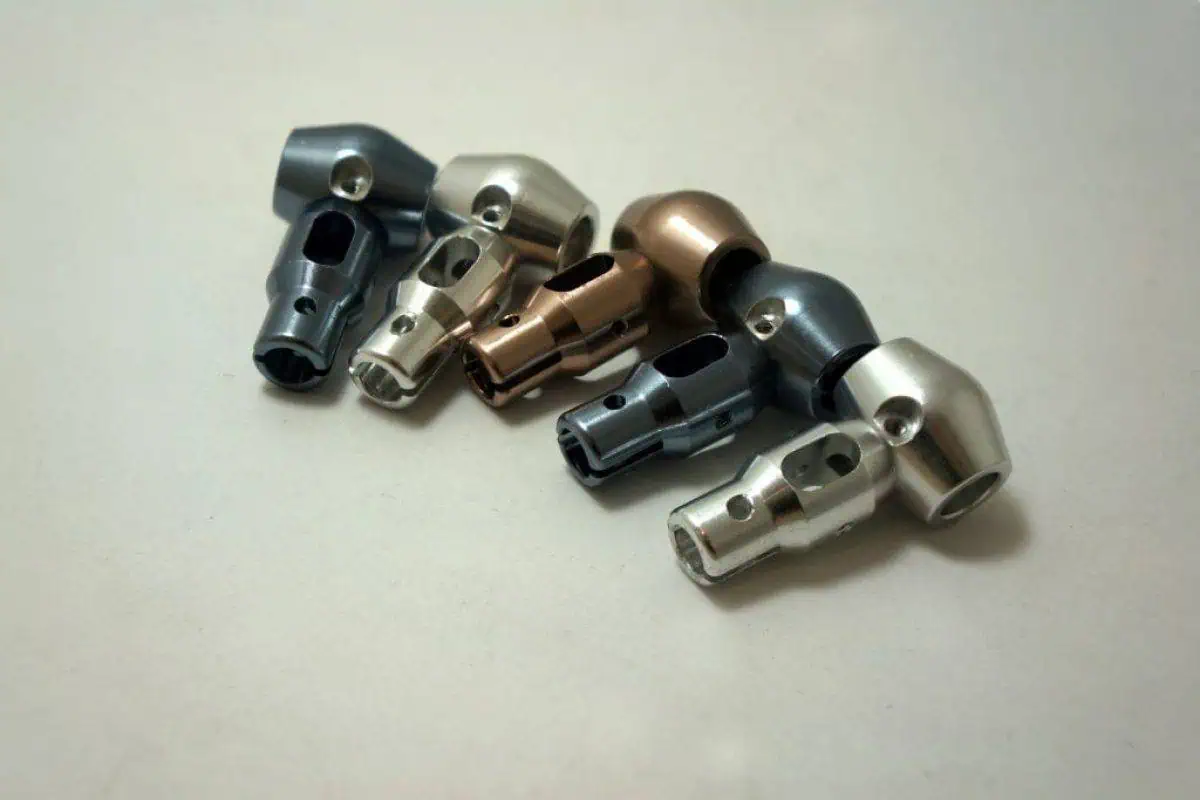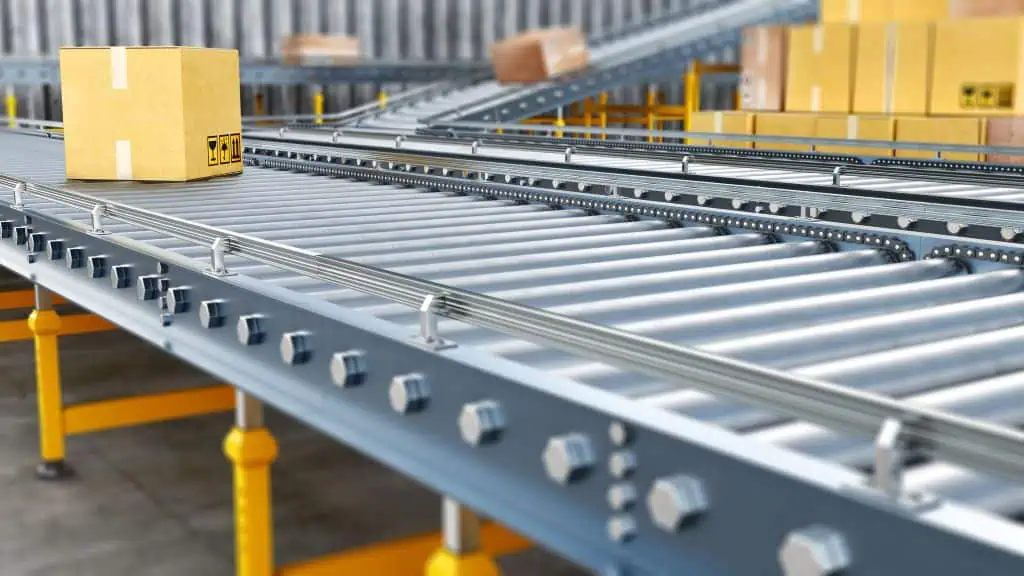
August 8, 2024
What Are the Different Types of Anodizing
Armes Precision » What Are the Different Types of Anodizing
Armes Precision » What Are the Different Types of Anodizing

Anodizing increases durability, corrosion resistance, and aesthetic appeal. It enhances the wear resistance of aerospace components or adds a vibrant color finish to consumer electronics. Understanding the appropriate use of anodizing can help you decide if it’s right for your manufacturing project.
Anodizing is an electrochemical process that enhances the natural oxide layer on metal surfaces. The process involves immersing the metal in an acid electrolyte bath and applying an electric current, creating a durable, corrosion-resistant oxide layer that integrates with the substrate.
Various industries use anodizing due to its versatility and effectiveness. Common applications include:
While aluminum is the most commonly anodized metal due to its availability and properties, several other metals can be anodized to improve durability, corrosion resistance, and aesthetic appeal. Here’s a closer look:
Each type of anodizing offers unique properties, making it suitable for specific uses.
Type I anodizing uses chromic acid as the electrolyte, known for its good corrosion resistance and dielectric properties. This type suits parts requiring tight tolerances without significant dimensional changes, making it popular in the aerospace and aircraft industries.
Type II anodizing uses sulfuric acid as the electrolyte, creating a thicker oxide layer than Type I. Its porous structure allows it to absorb dyes, offering various colors and finishes. This process is ideal for decorative, architectural, and consumer applications due to its good abrasion and corrosion resistance. It is more economical than Type I anodizing because of lower chemical and energy costs.
Type III anodizing, known as hardcoat anodizing, uses sulfuric acid under high current density and low-temperature conditions. This type offers superior abrasion, wear resistance, and excellent electrical insulation properties. It features a dark finish. Type III anodizing is extensively used in military, aerospace, automotive, and industrial applications that require maximum durability. The stringent process conditions make it more expensive but highly effective for demanding environments.
Boric-Sulfuric Acid Anodize (BSAA) combines boric acid with sulfuric acid as the electrolyte. This type provides good corrosion resistance and enhances adhesion for paint, lubricants, and adhesives. It suits parts requiring tight tolerances and is used in the aircraft and aerospace industries as an alternative to Type I anodizing.
Phosphoric Acid Anodize (PAA) uses phosphoric acid as the electrolyte to create a rough oxide film with protrusions that enhance adhesive properties. Due to its excellent adhesion properties, this type is ideal for structural adhesive bonding in high-humidity environments.
Thin-Film Sulfuric Acid Anodize (Type IIb) uses sulfuric acid at a lower concentration than standard Type II anodizing processes. This layer offers higher fatigue strength but less corrosion resistance compared to thicker films. This type suits applications requiring material strength but where extreme corrosion resistance is not mandatory.
While anodizing is popular for enhancing metal durability and appearance, other techniques also protect and color metal surfaces. Here are common alternatives to anodizing:
Powder coating electrostatically applies a dry powder to a metal surface and cures it under heat. This creates a durable finish resistant to corrosion, chipping, and fading. It is available in many colors and textures.
Electroplating deposits a thin metal layer onto another metal using an electric current, enhancing appearance and adding corrosion and wear resistance. Common metals include gold, silver, nickel, and chrome which are used in automotive parts, jewelry, and electronics.
Galvanizing coats steel or iron with zinc to prevent corrosion. Hot-dip galvanizing immerses metal in molten zinc, while electro-galvanizing uses an electric current. It is commonly used in construction, automotive components, and outdoor structures for excellent corrosion resistance.
Painting metal surfaces with high-quality, metal-specific paints offers good adhesion, durability, and protection against moisture and UV rays.
Chemical conversion coatings treat metal surfaces with chemicals to create a protective layer. Examples include chromate coatings for aluminum and phosphate coatings for steel. These coatings enhance corrosion resistance and provide a base for painting or powder coating.
PVD is a vacuum coating process in which metals are vaporized and deposited as a thin film. This creates an extremely hard, wear-resistant, and adhesive coating. PVD is used for cutting tools, medical devices, and decorative finishes.
Anodizing is a versatile surface treatment offering numerous benefits for various applications. Here are scenarios where anodizing is advantageous:
Choose anodizing based on specific needs such as durability, aesthetics, weight reduction, or environmental considerations.
Properly preparing materials for anodizing ensures the final product’s quality and durability. Here’s how to prepare the alloy before anodizing:
Use chemical cleaners or ultrasonic methods to remove contaminants like oils and residues. A clean surface ensures better adhesion of the anodized layer, resulting in a durable finish.
Etch the surface with acidic or alkaline solutions to remove imperfections and create a uniform texture. This step cleans and improves the surface’s appearance by providing a consistent matte finish.
Deoxidize to remove any remaining oxides, ensuring the fresh metal surface is ready for anodizing. This step uses deoxidizing agents to create optimal conditions for a robust oxide layer.
Secure parts onto racks or fixtures to ensure good electrical contact and prevent defects. Racking systems must accommodate various part sizes and shapes for uniform exposure to the electrolyte solution.
Apply special tapes or coatings to protect specific areas from anodizing. This technique is useful when only certain sections require anodization.
Conduct a thorough inspection to ensure all preparation steps were correctly followed. Address any issues before proceeding to ensure high-quality results.
Choosing the right surface treatment ensures metal components’ durability, aesthetic appeal, and performance. Anodizing provides benefits like enhanced corrosion resistance and vibrant colors, making it versatile for various applications.
At Armes Precision, we offer high-quality machining, fabrication, and assembly services. Our team of engineers, machinists, and technicians delivers exceptional workmanship and quality.
Are you looking for a reliable, skilled company for your metal fabrication needs? Send an RFQ today. Let us bring your designs to life with precision and excellence.





